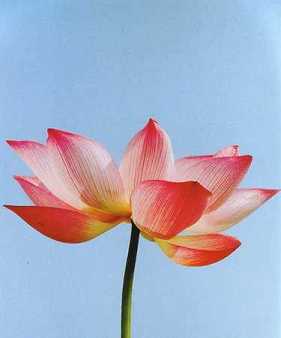解析辨识
发布时间:2022-10-26 09:50:19作者:华严经全文网解析辨识
[作者] 坦尼沙罗尊者
[中译]良稹
De-perception
by Ven. Thanissaro Bhikkhu
Meditation teaches you the power of your perceptions. You come to see how the labels you apply to things, the images with which you visualize things, have a huge influence over what you see, how they can weigh you down with suffering and stress. As the meditation develops, though, it gives you the tools you need to gain freedom from that influence.
禅定使你了解辨识的力量。你会发现,给事物赋予的标签与观察前的先入印象,怎样大幅度地左右你的知见,而这些东西的苦与张力怎样给你造成负担。不过,随着禅定的进步,你会获得工具,脱离那类影响。
In the beginning, when you first notice the power of perception, you can easily feel overwhelmed by how pervasive it is. Suppose you're focusing on the breath. There comes a point when you begin to wonder whether you're focusing on the breath itself or on your idea of the breath. Once this question arises, the normal reaction is to try to get around the idea to the raw sensation behind it. But if you're really sensitive as you do this, you'll notice that you're simply replacing one caricature of the breath with another, more subtle one. Even the raw sensation of breathing is shaped by how you conceptualize raw sensation. No matter how hard you try to pin down an unfiltered experience of breathing, you still find it shaped by your idea of what breathing actually is. The more you pursue the reality of the breath, the more it recedes like a mirage.
你最初意识到辨识的力量时,很容易对它的普遍存在有应接不暇感。譬如作呼吸禅定,到了某个程度,你会开始思索,自己到底在专注呼吸本身,还是呼吸的概念。这个问题一旦升起,通常的反应是,试着绕过概念,去观察它背后的原始觉受。不过假如你在观察时真正敏感,就会注意到,你只是以另一种对呼吸更精细的描绘方式,替代原先的概念罢了。即使呼吸的原始觉受,也成型于你对原始觉受这个概念的把握方式。无论你作多少努力,试图确定未经过滤的呼吸体验,你还是发现,它成型于你对呼吸究竟是什么这个观念。你越追踪呼吸的实相,它越后退,如海市蜃楼。
The trick here is to turn this fact to your advantage. After all, you're not meditating to get to the breath. You're meditating to understand the processes leading to suffering so that you can put an end to them. The way your relate to your perceptions is part of these processes, so that's what you want to see. You have to treat your experience of the breath, not as an end in itself, but as a tool for understanding the role of perception in creating suffering and stress.
技巧在于把此事转为己用。说到底,你作禅定非为理解呼吸。你作禅定是为了理解苦的升起过程,达到苦的终结。呼吸与辨识怎样相关,便是这些过程的一部分,因此你要观察的正是它。你必须把体验呼吸作为手段,而不是目的,透过它,理解辨识在苦与张力制造中的作用。
You do this by de-perception: questioning your assumptions about breathing, deliberately changing those assumptions, and observing what happens as a result. Now, without the proper context, de-perception could easily wander off into random abstractions. So you take the practice of concentration as your context, providing de-perception both with a general direction and with particular tasks that force it to bump up against the operative assumptions that actually shape your experience of the present.
The general direction lies in trying to bring the mind to deeper and more long-lasting levels of stillness so as to eliminate more and more subtle levels of stress. You're not trying to prove which perceptions of the breath depict it most truly, but simply which ones work best in which situations for eliminating stress. The objectivity you're looking for is not the objectivity of the breath, but the objectivity of cause and effect.
The particular tasks that teach you these lessons begin with the task of trying to get the mind to stay comfortably focused for long periods of time on the breath — and right there you run into two operative assumptions: What does it mean to breathe? What does it mean to be focused?
这里的做法是,解析辨识: 质疑有关呼吸的假定,刻意改变它们,观察结果如何。当然,缺乏适当的背景,拆解辨识很容易沦为随机杂念。因此,你就把修定作为背景,如此既提供一个总体趋向,也提供一些具体任务,迫使它冲击塑造当下体验的那些操作假设。
总体趋向是,试着把心带入越来越深度、持久的静止层次,以便消解程度越来越精细的张力。你并非要证实哪些呼吸辨识最真实地反映呼吸,而只是体验哪些辨识对于消解哪类张力最有效。你寻找的客观性,并非是呼吸的客观性,而是因果的客观性。
使你学得这类知识的具体任务,起始于试着让心舒适、长久地专注于呼吸——当下你就有了两个操作假定: 呼吸意味着什么? 专注意味着什么?
It's common to think of the breath as the air passing in and out through the nose, and this can be a useful perception to start with. Use whatever blatant sensations you associate with that perception as a means of establishing mindfulness, developing alertness, and getting the mind to grow still. But as your attention gets more refined, you may find that level of breath becoming too faint to detect. So try thinking of the breath instead as the energy flow in the body, as a full body process.
Then make that experience as comfortable as possible. If you feel any blockage or obstruction in the breathing, see what you can do to dissolve those feelings. Are you doing anything to create them? If you can catch yourself creating them, then it's easy to let them dissolve. And what would make you create them aside from your preconceived notions of how the mechanics of breathing have to work? So question those notions: Where does the breath come into the body? Does it come in only through the nose and mouth? Does the body have to pull the breath in? If so, which sensations do the pulling? Which sensations get pulled? Where does the pulling begin? And where is the breath pulled from? Which parts have the breath, and which ones don't? When you feel a sensation of blockage, which side of the sensation are you on?
一般认为呼吸是指出入鼻腔的气息,这个有用的辨识可作为起点。无论使你联想起该辨识的呼吸感何等粗显,不妨就把它当作确立念住、培养警觉,使心静止下来的手段。不过,随着专注力越来越精细,你也许会发现,呼吸层次微弱得难以探测。于是你试着把呼吸改想成一股体内能量流,一个全身过程。
接下来,要使该体验尽量舒适起来。如果你感到呼吸之中有任何障碍、阻碍,要设法化解那些觉受。你是不是在做什么,造就了它们? 你若发现是自己在造作,放下它们就不难了。除了你对呼吸机制该怎样运行有先入之见外,还有什么令你造作它们? 因此要质疑那些观念: 呼吸从哪里进入体内? 它只从口鼻进入么? 身体是否有必要把呼吸拉入体内? 若有必要,那么是哪些觉受在用力? 那些觉受被拉动? 拉动从何处开始? 呼吸又从何处被拉过来? 哪些部位有呼吸,哪些部位没有? 障碍感升起时,你在觉受的哪一边?
These questions may sound strange, but many times your pre-verbal assumptions about the body are strange as well. Only when you confront them head-on with strange questions can you bring them to light. And only when you see them clearly can you replace them with alternative concepts.
So once you catch yourself breathing uncomfortably in line with a particular assumption, turn it around to see what sensations the new assumption highlights. Try staying with those sensations as long as you can, to test them. If, compared to your earlier sensations associated with the breath, they're easier to stay with, if they provide a more solid and spacious grounding for concentration, the assumption that drew them to your attention is a useful new tool in your meditation. If the new sensations aren't helpful in that way, you can throw the new tool aside.
这些问题听来也许怪诞,然而许多情形下,你对色身的下意识假设也同样怪诞。只有用怪诞的问题迎面观照,才能把那些假设揭开。你只有把它们看清楚了,才能用其它概念取而代之。
因此,你一旦发现自己呼吸不顺乃是缘于某个特定的假设,便把它转过来看看,新的假设会揭示出什么样的觉受。试着尽可能长时间地安住于那些觉受,检验它们。如果它们较之你先前的呼吸感更容易安住,如果它们为定力提供的基础更坚实、宽广,那么揭示它们的那个假设对你的禅定便是一个有益的新工具。如果新的觉受无益,就把新工具弃置一边。
For example, if you have a sense of being on one side of a blockage, try thinking of being on the other side. Try being on both. Think of the breath as coming into the body, not through the nose or mouth, but through the middle of the chest, the back of the neck, every pore of your skin, any spot that helps reduce the felt need to push and pull.
Or start questioning the need to push and pull at all. Do you feel that your immediate experience of the body is of the solid parts, and that they have to manage the mechanics of breathing, which is secondary? What happens if you conceive your immediate experience of the body in a different way, as a field of primary breath energy, with the solidity simply a label attached to certain aspects of the breath? Whatever you experience as a primary body sensation, think of it as already breath, without your having to do anything more to it. How does that affect the level of stress and strain in the breathing?
And what about the act of staying focused? How do you conceive that? Is it behind the breath? Surrounded by breath? To what extent does your mental picture of focusing help or hinder the ease and solidity of your concentration? For instance, you may find that you think of the mind as being in one part of the body and not in others. What do you do when you focus attention on another part? Does the mind leave its home base — say, in the head — to go there, or does the other part have to be brought into the head? What kind of tension does this create? What happens if you think of awareness already being in that other part? What happens when you turn things around entirely: instead of the mind's being in the body, see what stress is eliminated when you think of the body as surrounded by a pre-existing field of awareness.
譬如,你感到自己位于堵塞的一边,试着观想处于堵塞的另一边。试想同时在两边。不把呼吸想成从口鼻而入,而是从胸前、颈后、皮肤每个毛孔、任何一个有助于减少推拉感之处进入。
或者,质疑推拉的根本必要性。你是否感到,色身直接体验到的是固态部位,必须由后者掌管处于次要地位的呼吸机制? 如果你设想以另一种方式直接体验色身,把它当成主要是一个呼吸能量场,固态部位只是对呼吸某些侧面的一种标签,又将如何? 无论你经历哪一种主要色身感,把它设想为现成的呼吸,无需你再对它做些什么; 那样一来对呼吸的苦与紧张层次,又有什么影响?
还有,维持专注的动作是怎么回事? 你是怎样构想它的? 它位于呼吸之后,还是被呼吸包围? 在多大程度上,你对于入定的心理形象,协助或妨碍了定力的自如与坚固? 例如,你也许注意到自己以为心识存在于色身某个部位,不在其它部位。那么当你把注意力放在别处时,是怎么做的? 是心识离开本位(比如头部)去该处,还是得把其它部位引入头脑? 这样做造成了何等张力? 你把知觉设想为现存于该部位将如何? 如果你把整件事颠倒过来,与其设想心在在色身之内,反之,设想色身被一现成的觉知场包围,又将如何?
When you ask questions like this and gain favorable results, the mind can settle down into deeper and deeper levels of solidity. You eliminate unnecessary tension and stress in your focus, finding ways of feeling more and more at home, at ease, in the experience of the present.
Once the mind is settled down, give it time to stay there. Don't be in too great a hurry to move on. Here the questions are, "Which parts of the process were necessary to focus in? Which can now be let go? Which do you have to hold onto in order to maintain this focus?" Tuning into the right level of awareness is one process; staying there is another. When you learn how to maintain your sense of stillness, try to keep it going in all situations. What do you discover gets in the way? Is it your own resistance to disturbances? Can you make your stillness so porous that disturbances can go through without running into anything, without knocking your center off balance?
As you get more and more absorbed in exploring these issues, concentration becomes less a battle against disturbance and more an opportunity for inner exploration. And without even thinking about them, you're developing the four bases of success: the desire to understand things, the persistence that keeps after your exploration, the close attention you're paying to cause and effect, and the ingenuity you're putting into framing the questions you ask. All these qualities contribute to concentration, help it get settled, get solid, get clear.
当你这样一边提出问题,一边获得有益结果时,心就会入定,越来越深、越来越牢固。你消解了专注时不必要的紧张与压力,找到越来越自在、舒适的觉受方式来体验当下。
一旦心定下来,让它定久一点。不要急于继续前行。此处的问题是,“这个过程的哪些部分必须专注? 哪些可以放下? 哪些部分你需要抓住,才能维持这个定境?" 进入正确的觉知层次是一个过程,停驻在那里,又是一个过程。你在学着维持这个寂止感时,试着在任何场合之下保持它。你发现有什么在妨碍? 是否它是你自己对干扰的抵制? 能否使你的静止如此多孔,那些干扰可以一穿而过、不受抵挡、不把你的定力中心撞得失去平衡?
随着你越来越沈浸于对这些问题的探索,入定渐少成为一场抵制干扰的战斗,渐多地成为一个探索内心的机会。不知不觉地,你便在培养四神足: 理解事物的欲望、坚持探索的勤奋、对于因果的密切关注、提问方式的创意。所有这些素质皆有助于培养定力,助它安止、牢固、清晰。
At the same time, they foster discernment. The Buddha once said that the test for a person's discernment is how he or she frames a question and tries to answer it. Thus to foster discernment, you can't simply stick to pre-set directions in your meditation. You have to give yourself practice in framing questions and testing the karma of those questions by looking for their results.
同时,这些探索也在培养着明辨。佛陀曾经说过,测验某人的明辨程度的方法,是看他/她怎样提出问题,怎样尝试解答。因此,为了培养明辨,你在禅定中不能只固守既定的指南。你必须构思问题,寻其果报,如此测试那些问题的业力,给自己创造修练的机会。
Ultimately, when you reach a perception of the breath that allows the sensations of in-and-out breathing to grow still, you can start questioning more subtle perceptions of the body. It's like tuning into a radio station. If your receiver isn't precisely tuned to the frequency of the signal, the static interferes with the subtleties of whatever is being transmitted. But when you're precisely tuned, every nuance comes through. The same with your sensation of the body: when the movements of the breath grow still, the more subtle nuances of how perception interacts with physical sensation come to the fore. The body seems like a mist of atomic sensations, and you can begin to see how your perceptions interact with that mist. To what extent is the shape of the body inherent in the mist? To what extent is it intentional — something added? What happens when you drop the intention to create that shape? Can you focus on the space between the droplets in the mist? What happens then? Can you stay there? What happens when you drop the perception of space and focus on the knowing? Can you stay there? What happens when you drop the oneness of the knowing? Can you stay there? What happens when you try to stop labeling anything at all?
As you settle into these more formless states, it's important that you not lose sight of your purpose in tuning into them. You're here to understand suffering, not to over-interpret what you experience. Say, for instance, that you settle into an enveloping sense of space or consciousness. From there, it's easy to assume that you've reached the primordial awareness, the ground of being, from which all things emerge, to which they all return, and which is essentially untouched by the whole process of emerging and returning. You might take descriptions of the Unconditioned and apply them to what you're experiencing. If you're abiding in a state of neither perception nor non-perception, it's easy to see it as a non-abiding, devoid of distinctions between perceiver and perceived, for mental activity is so attenuated as to be virtually imperceptible. Struck with the apparent effortlessness of the state, you may feel that you've gone beyond passion, aversion, and delusion simply by regarding them as unreal. If you latch onto an assumption like this, you can easily think that you've reached the end of the path before your work is really done.
最后,你达到一种令出入息寂止下来的呼吸辨识,那时便可以对更精细的色身辨识提出问题。这样做类似于无线电调频。你若调得不准,杂音会干扰讯号的细节。调准时,每个细节都会传过来。你的色身觉受也类似: 当呼吸动态寂止下来时,辨识与生理觉受之间相互作用的更微妙的细节便显现出来。色身仿佛是一股原子感的雾体,你开始看见辨识如何与那团雾体相互作用。色身的形状多大程度上属于那团雾体的固有性质? 多大程度上是有意形成——或者说是外加的? 你放下造作该体形的意志[动机],会发生什么? 你能专注于雾体颗粒之间的空间么? 那时会发生什么? 你能安住那里么? 当你放下对空间的辨识,改为专注于觉知,那时会发生什么? 你能安住那里么? 当你放下觉知的一体感,会发生什么? 你能安住那里么? 你若根本不试图标记任何事物,那时又会发生什么?
随着你在这些无色界层次定驻下来,重要的是不要迷失自己进入其中的目的。你在这里的目的是理解苦,不是过分铨解自己的体验。譬如说,你在一个包容一切空间或意识之感的境界中定驻下来。从那里看,容易认为你已到达原始的觉知、生命的本源,万物从其中升起、又回归其中,本身却不受整个升落过程的影响。也许你会以为经上对无缘起的描述合乎自己的体验。如果你定驻于非想非非想界,则容易以为它是心无所住[之状态],不存在知与被知的分界,因为思维活动微弱至极,基本上不可分辨。你被该境界的表面无为所打动,也许觉得只需把贪、瞋、痴看成幻相,便超越了它们。如果你抓紧这类假定,很容易以为自己已经到达正道顶端,实际上你的工作尚未完成。

Your only protection here is to regard these assumptions as forms of perception, and to dismantle them as well. And here is where the four noble truths prove their worth, as tools for dismantling any assumption by detecting the stress that accompanies it. Ask if there's still some subtle stress in the concentration that has become your dwelling place. What goes along with that stress? What vagrant movements in the mind are creating it? What persistent movements in the mind are creating it? You have to watch for both.
此处你的唯一防护,是把这些假定看成辨识形式,也它们拆解开来。四圣谛正在此处显其价值,即作为拆解任何假设的工具,方法是: 探测伴随这些假设的张力。问自己,你安住的那个定境里是否仍有某种精细的张力。是什么伴随那种紧张? 是内心什么样的游散动态在制造它? 是内心什么样的持续动态在制造它? 这两个方面你都必须审视。
In this way you come face to face with the perceptions that keep even the most subtle states of concentration going. And you see that even they are stressful. If you replace them with other perceptions, though, you'll simply exchange one type of stress for another. It's as if your ascending levels of concentration have brought you to the top of a flag pole. You look down and see aging, illness, and death coming up the pole, in pursuit. You've exhausted all the options that perception can offer, so what are you going to do? You can't just stay where you are. Your only option is to release your grip. And if you're letting go fully, you let go of gravity, too.
就这样,你面对面地看见了维持着哪怕最精细的定境的那些辨识。你看见,即便它们也有苦。你若以其它辨识替代它们,只会以一种苦替代另一种苦。这就好比上升的定力层次把你带到了一根旗杆的顶点。你朝下看,看见老、病、死朝着旗杆追上来。你已穷尽了辨识所能提供的一切,怎么办? 你在那里停留不得。唯一出路是松开你的紧握。如果你彻底放下,便也放下了重力。
最近订正 2-19-2007



